Reviews
Peter Bogdanovich
USA, 1968
Credits
Review by David Carter
Posted on 28 October 2011
Source Paramount DVD
Categories 31 Days of Horror VIII
Much has been made about the number of actors and actresses who began their careers in the horror genre. Jamie Lee Curtis, Kevin Bacon, Johnny Depp, and dozens more used horror as their entrée to the world of more “serious” projects, and not all stars look back fondly on these roots. Less is made about the several directors who helmed horror films for their first forays behind the camera. These “frightening firsts” were rarely commercially or critically well received; ironic given the later successes the filmmakers would have. The films we’ll be looking at over the next four weeks are a varied lot. In a few instances, the director was simply a “hired gun;” others were wholly responsible for the finished films. Some filmmakers have downplayed their debuts, while others have embraced these early works. Invariably, these frightening firsts allow us to reassess these overlooked works in light of their subsequent oeuvre, and examine how, if at all, these films influenced the works for which they are best known.
On August 1st, 1966, University of Texas at Austin student and former US Marine Charles Whitman took the elevator to the 27th floor of the main administrative building on UT’s campus. He had an appointment one floor above, on the observation deck below the building’s famous clocks. Shortly before noon, Whitman opened fire on the city below with a Remington 700 outfitted with a high-powered sniper scope. Two hours and over fifty victims later, Whitman was dead. Authorities have offered no clear reasons for Whitman’s actions on that day, only theories involving stress and an undiagnosed brain tumor. Whitman himself was as mystified by his behavior as everyone else; a letter found in his home along with the bodies of his wife and mother stated plainly: I do not really understand myself these days.
Whitman’s story captivated America but curiously only one film was produced on the event—Peter Bogdanovich’s debut feature Targets. Bogdanovich, like many others, got his start in cinema courtesy of Roger Corman, who gave him the opportunity to write and direct a feature because he admired Bogdanovich’s film criticism. Corman reportedly only put two restrictions on Bogdanovich: the film had to use footage from Corman’s 1963 The Terror and had to include a cameo by that film’s star, Boris Karloff. It is unlikely that Bogdanovich, Corman, and Karloff knew the magnitude of the film that would be produced from those constraints. In addition to being Karloff’s finest performance and one of the most intelligent films produced by Corman, Targets is perhaps the first postmodern horror film and a standout of Bogdanovich’s career.
Targets consists of two stories that only intersect at the climax. Boris Karloff portrays Byron Orlok, an aging horror icon obviously and intentionally patterned after Karloff himself. Weary after playing the same scenery-chewing Victorian villain for the thousandth time (in Corman’s The Terror), Orlok announces that his most recent film will be his last. The Corman-esque producer thinks he’s bluffing, but up-and-coming director Sammy Michaels (played by up-and-coming director Peter Bogdanovich) is considerably more concerned. He’s written his new film around Orlok, and promises that it will revive his career and change the face of horror. Orlok steadfastly refuses even after Michaels pleads with him at his home, only acquiescing slightly by agreeing to promote the film with an appearance at its drive-in debut.
The film’s second story centers on clean-cut, all-American boy Bobby Thompson, who is introduced while buying a rifle. Bobby only intends to use it to shoot soda cans as target practice, but his father suggests that the pair may go on a hog hunting trip in the near future. For reasons left unexplained, Bobby’s mental state is deteriorating and the following morning Bobby shoots his wife, his mother, and a delivery boy who happened to be at their home. He then purchases a large cache of weapons and perches on top of a water tower overlooking the highway. From there, Bobby proceeds to shoot several motorists while they drive by; anyone not immediately killed is picked off while they desperately search for help. He eludes police and escapes from the scene, heading to the drive-in theatre where Orlok will be appearing later. Finding his way behind the screen, Bobby sticks the barrel of his rifle through a hole in the fabric and waits for darkness.
The central theme of Targets is made most evident in a scene where Orlok muses that his days as a “monster” have passed, holding up a gory newspaper headline to prove that America no longer needed “boogeymen,” they had each other to fear. Targets was one of the first horror/exploitation films to attempt to translate a real-life horror on screen, and it was oddly prescient about course that both American culture and horror cinema would take in the coming decade. Though the Whitman case was a national sensation, it would quickly be swept from America’s collective consciousness prior to Targets’ release with the assassinations of Martin Luther King Jr. and Robert Kennedy. Exactly one year later, the culture of fear in America would be given another jolt by the Manson Family slayings. The seventies and early eighties would see the Hillside Stranglers, the Son of Sam, Mark David Chapman, Ted Bundy, John Hinckley Jr., and Richard Ramirez. Orlok was correct; evil had a new face, and it was much closer to that of Bobby Thompson than his own.
In this regard, Targets emerges as the most direct precursor to the more extreme forms of horror cinema that emerged in the early seventies. It beat Night of the Living Dead to screens by two months, and while George A. Romero’s film was concerned with the psychic trauma of Vietnam, Targets takes a more Freudian approach to sixties and seventies’ angst. No longer was the other a non-human entity (zombie, vampire, etc) but ourselves. The estrangement from one’s fellow citizens is the genesis of Targets’ horror: If Thompson/Whitman could do this, couldn’t everyone? Couldn’t I? These concepts would reappear in the two standouts of early seventies horror: Last House on the Left and The Texas Chainsaw Massacre. In both, an act of kindness to one’s fellow man starts the sequences of events leading toward the deaths of the main characters and each featured monsters that were all too human. Bogdanovich picked up on this idea that the new monsters had human faces years before Craven and Hooper, and although Targets has traditionally been held in less esteem than those films, it is equally powerful.
Bogdanovich never returned to horror cinema after Targets. His work on Corman’s Voyage to the Planet of Prehistoric Women would also debut in 1968, but the limited work Bogdanovich did on the piecemeal film means it can hardly be considered his own. His next film, The Last Picture Show, launched him to stardom and critical acclaim, and his later successes What’s Up, Doc? and Paper Moon would solidify his standing as one of Hollywood’s most talented filmmakers. Targets remains undiminished by his later successes, however. Alongside Night of the Living Dead, it is one of the most gripping and powerful horror films of the late sixties, the first glimpse of the world to come both on-screen and off.
More 31 Days of Horror VIII
-
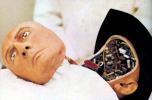
Westworld
1973 -

Child’s Play
1988 -
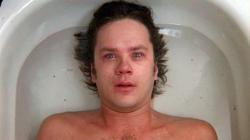
Jacob’s Ladder
1990 -
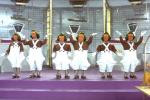
Willy Wonka and the Chocolate Factory
1971 -
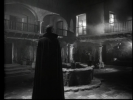
El Vampiro
1957 -
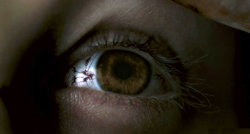
28 Weeks Later
2007 -

Piranha II: The Spawning
1981 -
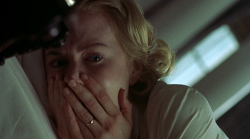
The Others
2001 -
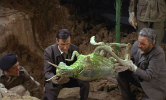
Quatermass and the Pit
1967 -

I Know Who Killed Me
2007 -

Bride of Re-Animator
1990 -

Alucarda
1978 -
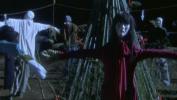
Kakashi
2001 -

Seizure
1974 -
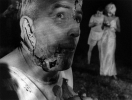
Night of the Living Dead
1968 -
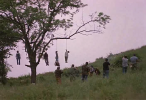
Night of the Living Dead
1990 -
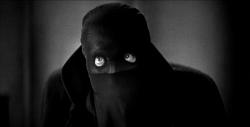
The Bat Whispers
1930 -

Miracle Mile
1988 -

Tintorera
1977 -

Paradise Lost
1996 -

The Cars that Ate Paris
1974 -

Ginger Snaps
2000 -
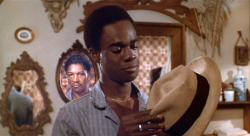
J.D.’s Revenge
1976 -
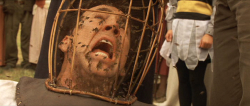
The Wicker Man
2006 -

Black Water
2007 -
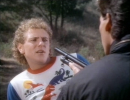
Don’t Panic
1988 -
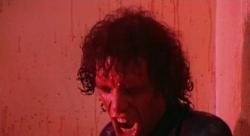
The Driller Killer
1979 -

Targets
1968 -

Mahal
1949 -
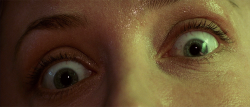
Event Horizon
1997
We don’t do comments anymore, but you may contact us here or find us on Twitter or Facebook.



